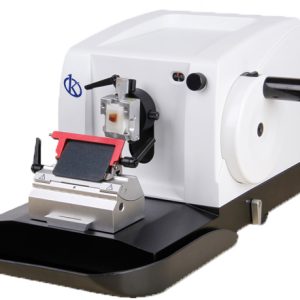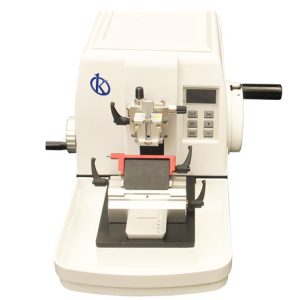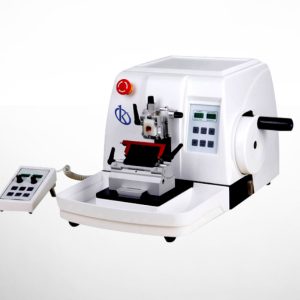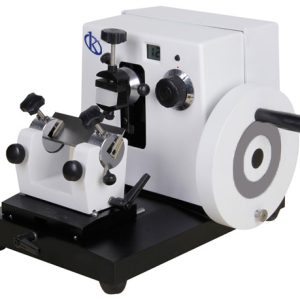Description
The YR417 Manual Microtome meets the multiple requirements of histology and histopathology laboratories, as well as research labs and industrial quality assurance settings. This manual microtome offers flexibility for use anywhere in the laboratory. Its high-precision mechanics allow users to make high-quality sections consistently. Additionally, its great functionality and attractive design provide optimal user comfort, enabling quick, safe, and smooth sectioning even under heavy workloads. Moreover, the integrated sectioning waste tray resists xylene and can be easily removed for cleaning.
Market Price
The YR417 Manual Microtome is priced between $8500 and $10000 USD, depending on additional specifications and shipping costs. To get a detailed and personalized quote, we recommend using our Kalstein Plus platform. This opportunity allows you to improve the precision of your histological cuts and enhance the quality of your research without compromising performance.
Frequently Asked Questions
- What is the minimum cutting thickness achievable with the YR417?
You can adjust the YR417 to achieve a minimum cutting thickness of 1 μm, which is ideal for applications requiring high precision in histological cuts.
- How do you adjust the cutting thickness on the YR417?
You can easily adjust the cutting thickness through precise controls, ensuring reproducible results in each operation.
Advantages and Disadvantages
Advantages:
- High-precision roller guide rails ensure exact cuts.
- Comfortable and flexible operation supports intensive laboratory use.
- Wear resistance minimizes the need for frequent maintenance.
- The xylene-resistant waste tray is easy to clean.
Disadvantages:
- Users may need time to familiarize themselves with all functions.
- Maintaining precision in high-performance environments may require periodic adjustments.
Product Use in the Field
The YR417 Manual Microtome is essential in histology and pathology laboratories for the precise preparation of samples before microscopic analysis. It handles samples up to 70×70 mm and precisely adjusts the cutting thickness, making it ideal for demanding scientific research and clinical studies.
Recommendations
To optimize the YR417 Manual Microtome’s performance, regularly adjust and calibrate it according to your experiment specifications. Follow the detailed maintenance instructions in the user manual to ensure precise and consistent results every time.
Discover how the YR417 Manual Microtome can enhance precision in your laboratory. Request a personalized quote now through Kalstein Plus and advance towards greater efficiency in your histology processes. Get your automatic quote today and experience innovation in your daily laboratory work.
Technical Specifications
| Model | YR417 |
| Trimming Thickness Setting Range | 0- 60μm |
| Minimum Setting of Sectioning Thickness | 1μm |
| Maximum Specimen Size | 70×70mm |
| Trimming Thickness | 15μmand 35μm |
| Specimen Retraction | 60μm(optional) |
| Total Horizontal Specimen Feed | 28mm |
| Vertical Specimen Stroke | 70mm |
| Movement Range of the Base of BladeHolder Base | 0-60mm (front to back) |
| Movement Range of the Blade Press plate | 0-23mm |
| Specimen Holder Rotation | at any angle within360 degrees |
| Specimen Orientation | XY – 8° |
| Precision Error | ±1% |
| Dimensions | 590×500×330mm (W×D×H) |
| Net weight | 37kg |






